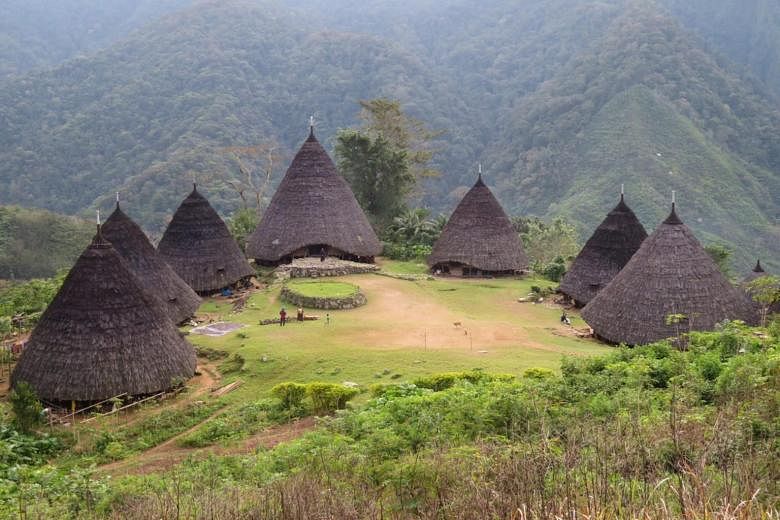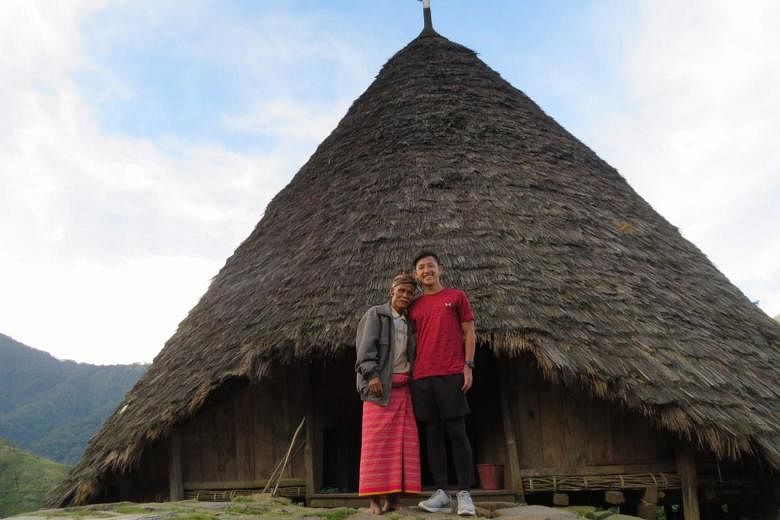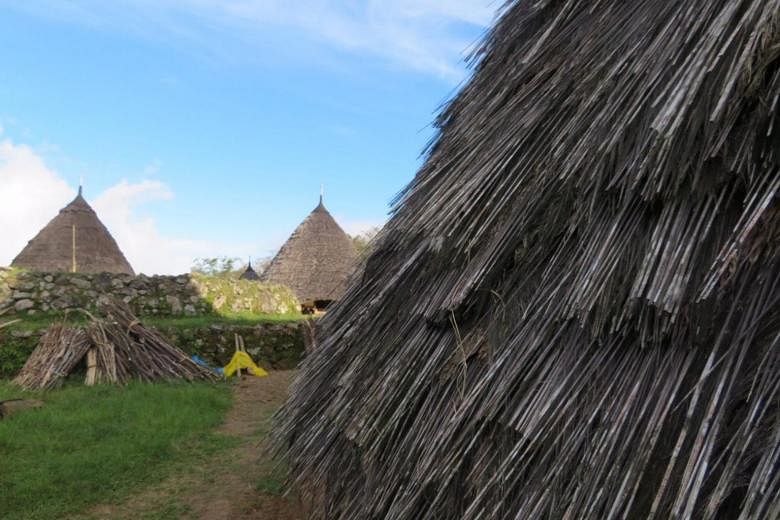There was no dramatic sunset. No bright orange orb descending behind a mountain, slowly shrinking into a semi-circle, before finally disappearing.
None of that. Instead, everything just slowly grew dimmer, as the clouds rolled in.
I was in the village of Wae Rebo, in Flores, Indonesia, 1,100m above sea level, approximately seven times the height of Bukit Timah Hill.
Home to about 50 people, it sits in a valley, with mountains rising up around it. There was a gentle breeze blowing, and the air was cool.
Some might even say the air was light. After all, the village is only accessible on foot via a three-hour, mostly uphill, trek through dense forest, and some people may find themselves breathless from exhaustion at the end of it.
The trip lasted two days and one night.
In the morning, my guide Gusti said he thought it was 6am when he woke up because of how dark the place was. Lo and behold, it was actually 8am. Being in a valley does weird things to your sense of time.
When I first entered the village, I was awestruck by the seven tall, brown conical houses that sat in a semi-circle. Wae Rebo is one of the many villages of the Manggarai people, but it is the only one left with an entire village of houses built in the traditional Mbaru Niang style - Cone-shaped houses raised on stilts, supported by a bamboo skeleton, and lined on the outside by the bark of the palm tree.

In other villages these days, there is only one traditional Mbaru Niang house, which is the ceremonial house.
Getting here wasn't easy. I flew into Komodo Airport in Labuan Bajo, the stop for the famous Komodo National Park.
The next morning, it was a seven-hour drive. Some parts of the roads were so bumpy, you could put a scoop of ice cream in a glass of milk, hold onto the cup for the entire journey, and emerge at your destination with a milkshake.

The final step (or should I say, steps - many, many steps) was that three-hour trek. The locals complete it in a remarkable one and a half to two hours. Accompanied by the sounds of singing birds, it was truly the best trek I'm never doing again.
Upon arrival, visitors must attend a welcome ceremony led by the village chief, Mr Alex.

Mr Alex, in his 80s, is a jolly character with a funky moustache, and has been the village chief for 10 years.
He asked the spirits of the ancestors to keep us safe during our stay there and on our journey back out.
With the blessings of the ancestors, he said we had become members of the Wae Rebo family.
Considering I am typing this story for you now, the ancestors sure did a great job keeping me safe.

The villagers of Wae Rebo revere their ancestors. The cemetery overlooks the village from a slope up a hill.
The ceremonial house, the tallest in the village and marked with a pair of buffalo horns at its apex, holds an offering in the top level dedicated to the ancestral spirits.

Buffalo are sacred animals in Manggarai culture.
Mr Alex explained that the ceremonial house is 15m tall and 15m wide. He allowed me to climb to its second level to have a look, nimbly climbing up with me.
The way up and down was a thick piece of bamboo in the centre, with "steps" carved into it. There were bamboo baskets and sacks in the dimly lit house.
As I looked back down to the ground level, it suddenly occurred to me that it was actually quite high.
These houses are deceptively massive. They not only looked like party hats, you could probably throw quite a party in one.
Each house has five floors. The first is the kitchen and common area, while the rest are used to store items, foodstuffs, and seeds such as rice and corn that are yet to be planted. In the ceremonial house, the fifth floor holds the ancestral offering mentioned earlier.

There are also gongs and drums in the ceremonial house, which are used during village ceremonies and rituals.
The houses, Mr Alex explained, were last renovated four years ago.
Gusti said the conical design of the houses signifies the unity of the people, since it starts from one common point and spreads outwards from there.
The same Manggarai logic could be seen in the Spiderweb Padi Fields near Ruteng, where families segment circular plots of land to share like a pizza.

Nowadays, Manggarai people in other villages have modern adaptations of the house. Houses with four walls are built, with roofs that look more pyramid than cone, made out of zinc. These last longer and are easier to maintain, Gusti explains.

Wae Rebo has no cellular reception or internet connection. So you can't check in on Facebook, post on Instagram, nor Whatsapp your friends. It's really a very good place to have a digital cleanse.
I found myself just walking around the village, trying to pet the chickens, poking at the coffee beans that were being sunned, and just looking at the houses which are honestly quite architecturally brilliant. And I don't even know a thing about architecture.

The only rule the Wae Rebo villagers had for visitors was not to climb up the raised circular plot at the exact centre of the village, which was their sacred altar.
Gusti said that over 80 per cent of the villagers are farmers. They grow coffee around their village, harvesting the beans and processing them for sale in other villages.

In the past they also used to spend their time hunting wild pigs and rats in the surrounding forests, and cooking them for meals.
Meals in Wae Rebo are very basic. We ate rice, vegetables, chicken and eggs.
"They eat very simple food. But with good company, even simple food becomes luxurious," Gusti said.
I wondered whether the chicken was one of those I saw walking around the village. Perhaps it was that annoying rooster that kept crowing at the top of its lungs for no reason.
The children of Wae Rebo attend school in the village of Dintor at the foot of the mountain, returning only at weekends. It is also where the villagers head to to seek medical attention when they fall ill.

My short time in Wae Rebo was serene and calm, with no rush nor worries whatsoever.
I really came to appreciate just how simple it is for us urban types to get from one place to another so conveniently as and when we want to.
You can't take a Grab through the forest to Wae Rebo, and when you're there you most certainly can't fill your hunger by ordering through UberEats.
Perhaps for the locals, it is their way of life and they are used to it. But for a city dweller, it is quite an eye opener and really helps me value what we usually take for granted.
But also for a city dweller, it is quite a welcome respite just to get away from the madness of it all.






